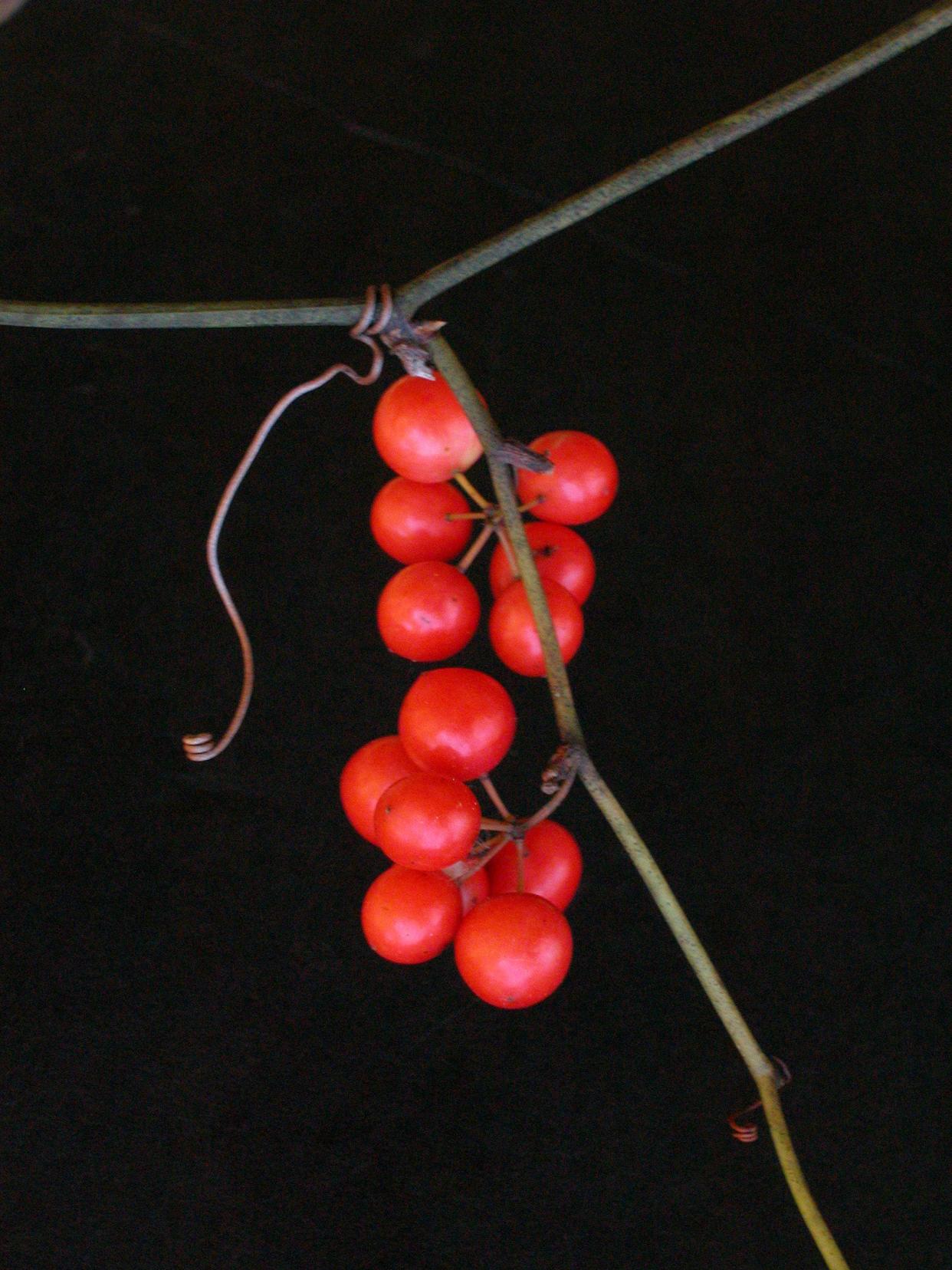Coral catbrier vines add pop of color in winter thickets | Mystery Plant

You go through life, and you become aware of various truths. For instance: for me as a teacher (maybe you?), it seemed that the students, semester after semester, were getting steadily younger.
What about this one: a lot of books out there were apparently printed with shrinking ink. And here’s another: Christmas seems to come earlier and earlier every year, it seems.
As far as Christmas and this long string of holidays that is now upon us, here's a botanical reminder of the rapidly changing seasons.
Native trees: Top native trees to plant to add brilliant fall color, breakfast for songbirds | Walthall
Christmas trees: 'Don't wait': Local Christmas tree retailers report high sales amid nationwide shortage
Coral catbrier, Smilax walteri, is a native woody vine, common in all of the Southeast’s coastal plain counties. It may be found from New Jersey well into Florida and then all the way to eastern Texas. It really likes its feet wet, and is quite at home in wetlands, especially swampy places.
It likes to grow in thickets, atop a variety of bushes such as ti-ti, pepperbush, and red bay. During the summer it pretty much blends in with all the other vegetation. The leaves are basically football-shaped (a fat football), and bright green. Not too much special there.
The flowers are pale yellow, produced in the late spring, and they are arranged in small umbels. Recall that an umbel is a cluster of individual flowers, all of which are connected by their stalks to a central point.)
Our late season mystery plant has a number of very similar viny relatives (in the same genus), all of which are evergreen, and native to this area, and which feature sharp thorns. Unlike its relatives, though, our Mystery vine is completely deciduous, losing all it leaves by winter. It also lacks thorns.
Green, spherical berries follow the blooms, and as they ripen, the berries become brilliant, glossy red. Each berry will have 2-3 hard seeds within. When one of these vines produces a big crop of fruit, it is quite a show. Because the vines climb into adjacent shrubs and trees, the berries are sometimes mistaken for those of a holly.
These berries taste pretty awful (at least to me), but they are eaten by wildlife and waterfowl. By the way, the other species that are related to our Mystery Plant tend to have bluish or even black berries, not nearly as conspicuous. I’m wondering why this vine isn’t featured in gardens. Such beautiful berries in the winter!
This species was named for Thomas Walter, an Englishman who immigrated to South Carolina before the Revolutionary War. Walter lived in a plantation along the Santee River, not far from the old canal (that is, the “Santee Canal”) that was designed to — and did — connect the Santee with the Cooper River.
Walter is of considerable importance as a southern botanist, for in 1788, his epic "Flora Caroliniana" was published, in which he described all the known plants of South Carolina, and which represented the first major botanical treatment of American plant species.
It turns out that Walter would have seen this plant, and indeed he refers to it in his flora. But the species was named in his honor by Frederick Pursh, 26 years later.
John Nelson is the retired curator of the A. C. Moore Herbarium at the University of South Carolina in Columbia SC. As a public service, the Herbarium offers free plant identifications. For more information, visit www.herbarium.org or email johnbnelson@sc.rr.com.
Never miss a story: Subscribe to the Tallahassee Democrat using the link at the top of the page.
This article originally appeared on Tallahassee Democrat: With no leaves, coral catbrier berries pop with winter color

